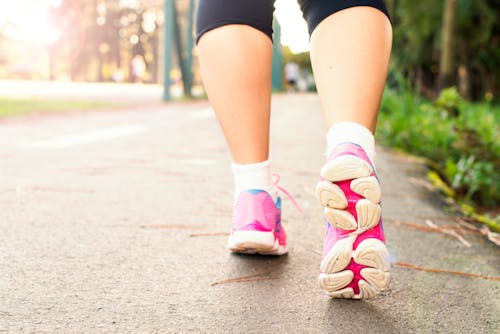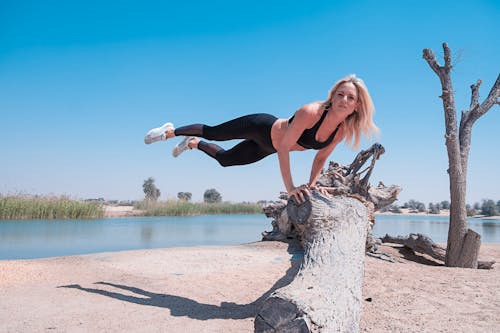Hiking: How Many Calories Does It Burn?
There’s nothing very like the sound of birds tweeting and leaves crunching underneath your climbing boots. And keeping in mind that you might be on your excursion generally to absorb the magnificence of nature, to really sweeten the deal, you’re def consuming a few calories climbing and getting a strong exercise.
While climbs change a ton relying upon the grade, territory, and speed, here is how to compute the number of calories you’ve consumed climbing.
Anyway, what number of calories do you consume climbing?
Walking around a smooth way is a certain something — and journeying up tricky curves is another.

Assuming you need to ascertain calories consumed by climbing, you’ll need to consider the landscape grade. Not certain what that implies? Bounce on a treadmill to get the vibe. As you continue up the slope, you’ll feel the opposition in your muscles — much the same as the climb of your fave trail.
Fundamentally, the number of calls you consume on your climb for the most part depends on your weight and the path grade. The higher the grade, the more calories you consume each hour.
A grade of 1 to 5 percent is gentle, while 6 to 15 is medium to pretty steep. A few paths have grades up to 35 percent (lower!), which would up your consumption check.
Obviously, these numbers are no-fuss gauges. Loads of different elements sway your exceptional calorie consumption, including the heaviness of your knapsack, the external temp, and your age.
Separating the recipe to compute the consume
Assuming you need to compute generally the number of calories you’ll consume each hour climbing, the Metabolic Equivalent (MET) equation can help.
Calories consumed = MET (6) * weight (kg) * time (hrs)
The MET is a worth that alludes to the measure of oxygen utilized specifically exercises.
Since climbing ordinarily has a worth of around 6, that is the thing that you’ll enter here. In this way, in case you’re a 150-pound (68 kg) individual climbing for 60 minutes, you can hope to consume around 408 calories (6681=408).
While this condition doesn’t consider the grade, sex, and different variables, it gives a respectable gauge after all other options have been exhausted.

Shouldn’t something is said about calories consumed from hiking?
The heavier your rucksack, the greater the weight — additionally, the more calories you’re probably going to consume because of the additional weight.
By and large, expect a light day pack to consume 50 to 100 additional calories each hour on the path. Going for a long excursion with your 30+ liter pack close behind? You’ll prob consume no less than 200 additional calories each hour.
On the off chance that you’ve pressed your 50+ liter sack to the edge, hope to consume significantly more. So as a best guess, a light knapsack will make you consume around 100 additional calories each hour, and a heavier one implied for all-out hiking will up your consumption tally by 200+.
For your security, clinical specialists from the University of Iowa Hospitals and Clinics suggest you convey close to 10 percent of your complete load in a knapsack. That implies on the off chance that you weigh 150 pounds, make an effort not to convey more than 15 pounds on your back to bring down the danger of strain, torment, or injury.
What might be said about climbing the Grand Canyon?
The Grand Cayon climb from the North Kaibab Trailhead to Cottonwood Campground is quite possibly the most well-known and amazing climb in the country.
For reference, a 130-pound individual doing the 6.8-mile climb in 4 hours will consume around 1,200 calories. Pleasant!
Climbing versus strolling: How do the calories pile up?
Climbers realize that a walk and a climb are not one in the equivalent. As a rule, the strolling landscape will in general be of the cleared assortment — a bit compliment than your normal climbing trail.
Along these lines, hope to consume fewer calories on a stroll than on a climb. Indeed, even at a lively speed, the territory of a climb is probably going to prompt some additional calorie consumption spike. In any case, factors like the external temp, your weight, age, and sex can likewise assume a part in this number.

Climbing versus running: What’s the caloric distinction?
Bruce Springsteen was “destined to run” — and some are destined to climb. Notwithstanding what group you’re on, here’s the way the calories stack up.
Like with strolling, most running will in general go down on level surfaces (like a street).
The number of calories you consume while street running relies upon different elements, including your weight and running velocity. As per wellness information gathered by a famous running application Strava, the normal worldwide running pace is around 6 miles each hour for ladies and 7 miles each hour for men.
Considering these figures, the table beneath analyzes 30 minutes of climbing at a shallow grade of 1 to 5 percent (at a moderate speed of 2.9 to 3.5 miles each hour) with running on level ground at a normal speed.





GIPHY App Key not set. Please check settings